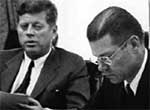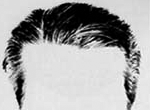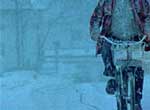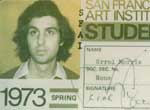By Todd McCarthy
Daily Variety - January 27, 1997
A Sony Pictures Classics release of a Fourth Floor Prods. presentation in association with American Playhouse. Produced, directed by Errol Morris. Executive producer, Lindsay Law. Co-producers, Julia Sheehan, Mark Lipson, Kathy Trustman.
Camera (Duart color), Robert Richardson; editors, Karen Schmeer, Shondra Merrill; music, Caleb Sampson; production design, Ted Basaloukos; set decoration, Scott Doonan; sound (Dolby), Steve Benes, Fred Burnham; assistant directors, Eric Korsh, Thomas Burke. Reviewed at Sundance Film Festival (Premiere), Jan. 19, 1997. Running time: 80 min.
With: Dave Hoover, George Mendonca, Ray Mendez, Rodney Brooks.
Humorously inventive and wildly original, "Fast, Cheap & Out of Control" is even more unclassifiable than any of the previous films by the iconoclastic Errol Morris. A documentary in the sense that it is largely composed of interviews with real people and coverage of them doing their respective work, this stylistically adventurous grab bag is also a highly individualistic and deliberately inconclusive meditation on the realization of dreams, the nature of human and animal endeavor and the future of life on the planet. Acquired by Sony Pictures Classics at Sundance, idiosyncratic pic will use strong critical support to carve a nice, specialized niche for itself, with good results down the line on TV and video.
Most of Morris' distinctive nonfiction works have pointedly been about specific subjects: a pet cemetery in "Gates of Heaven," a murder case in "The Thin Blue Line," physicist Stephen Hawking in "A Brief History of Time," and so on. His work is characterized by an irrepressible, often macabre humor, as well as by an impulse to visual experimentation that increases with each film. This new picture spotlights four seemingly disconnected men: Dave Hoover, a circus trainer of big cats who has always idolized the late Clyde Beatty; George Mendonca, a gardener who has spent his life shaping trees and bushes into enormous animal sculptures; Ray Mendez, who has dedicated himself to the study of blind, hairless mole-rats; and Rodney Brooks, a robot scientist with firm beliefs about the obsolescence of carbon-based life. At first and even second glance, these men, all oddballs in their own ways, appear utterly unrelated, and Morris stresses comic notes in his initial presentation of their eccentric endeavors, sending up Hoover's obsession with wild animals by intercutting lion-training sessions with cheesy old Hollywood serials about African jungle hunters, gawking at the elaborate topiary creations of Mendonca and the insect robots built by Brooks, and getting deep inside the underground world of Mendez's beloved mole-rats, absurd-looking buck-toothed creatures that can chew through concrete. Gradually, a certain wistfulness infiltrates the proceedings, as it emerges that Morris views the obsessive devotion Hoover and Mendonca pour into their work as vestiges of the sort of singular, idiosyncratic creative impulses that may be passing from the scene. At the same time, the weirdly enthusiastic activities of Brooks and Mendez suggest an eerie future in which individual effort is supplanted by programmed, insect-like behavior, one in which creatures sally forth blindly and by instinct.
Morris spells out none of this explicitly, as the film resembles a wave of images and ideas, the meanings of which will wash upon different viewers in different ways. Possibly influenced by his immersions in metaphysics with Hawking, the director places the diverse activities of his subjects in a cosmic context, a vantage point that encourages putting his real-life cast, human and animal, into a broader perspective and observing them much as the mole-rats are glimpsed moving frantically in their underground chambers.
What is lost through this method is heart; the intellectual notions behind the film are fresh and dazzlingly presented, but viewer response to what is onscreen accordingly remains strictly cerebral.
Fittingly for a work that looks both backward and forward in time and deals with a wide range of creative endeavors in an era of extreme flux, Morris and his daringly imaginative cinematographer, Robert Richardson (Oliver Stone's regular lenser), have accentuated their impressionistic approach by using everything 35, 16 and 8mm and video, B&W and color, straightforward docu-shooting and dramatically lit sequences. Further upping the sensory ante is the limber and witty editing by Karen Schmeer and Shondra Merrill and the score by Caleb Sampson, which mimics to an astonishing degree the musical strategies of Philip Glass, who has worked with Morris.
Working at a rarefied level of thoughtfulness and philosophical probing that stems directly from the everyday activities of working people, and proceeding out on a high wire without the net of a pre-existing subject, Morris has fashioned a very curious picture of meanings both elusive and profound.
Fast, Cheap & Out of Control
REVIEWS/ARTICLES
Todd McCarthy (Fog of War)
Fred Kaplan (Fog of War)
Samantha Power (Fog of War)
Ron Rosenbaum (Fog of War)
Kenneth Turan (Fog of War)
Peter Applebome (Mr. Death)
Ron Rosenbaum (Mr. Death)
David Ansen (Fast, Cheap & Out of Control)
Roger Ebert (The Thin Blue Line)
Terrence Rafferty (The Thin Blue Line)
Janet Maslin (Vernon, Florida)
Alan Berger (Gates of Heaven)
Michael Covino (Gates of Heaven)
Roger Ebert (Gates of Heaven)
MORE FAST, CHEAP
Synopsis
Transcript
Gallery
Watch Clip
BUY THIS MOVIE
Amazon
OTHER FILMS
Gates of Heaven
Vernon, Florida
The Thin Blue Line
A Brief History of Time
Mr. Death
The Fog of War
Standard Operating Procedure
Tabloid
The Unknown Known
The B-Side
Wormwood American Dharma







